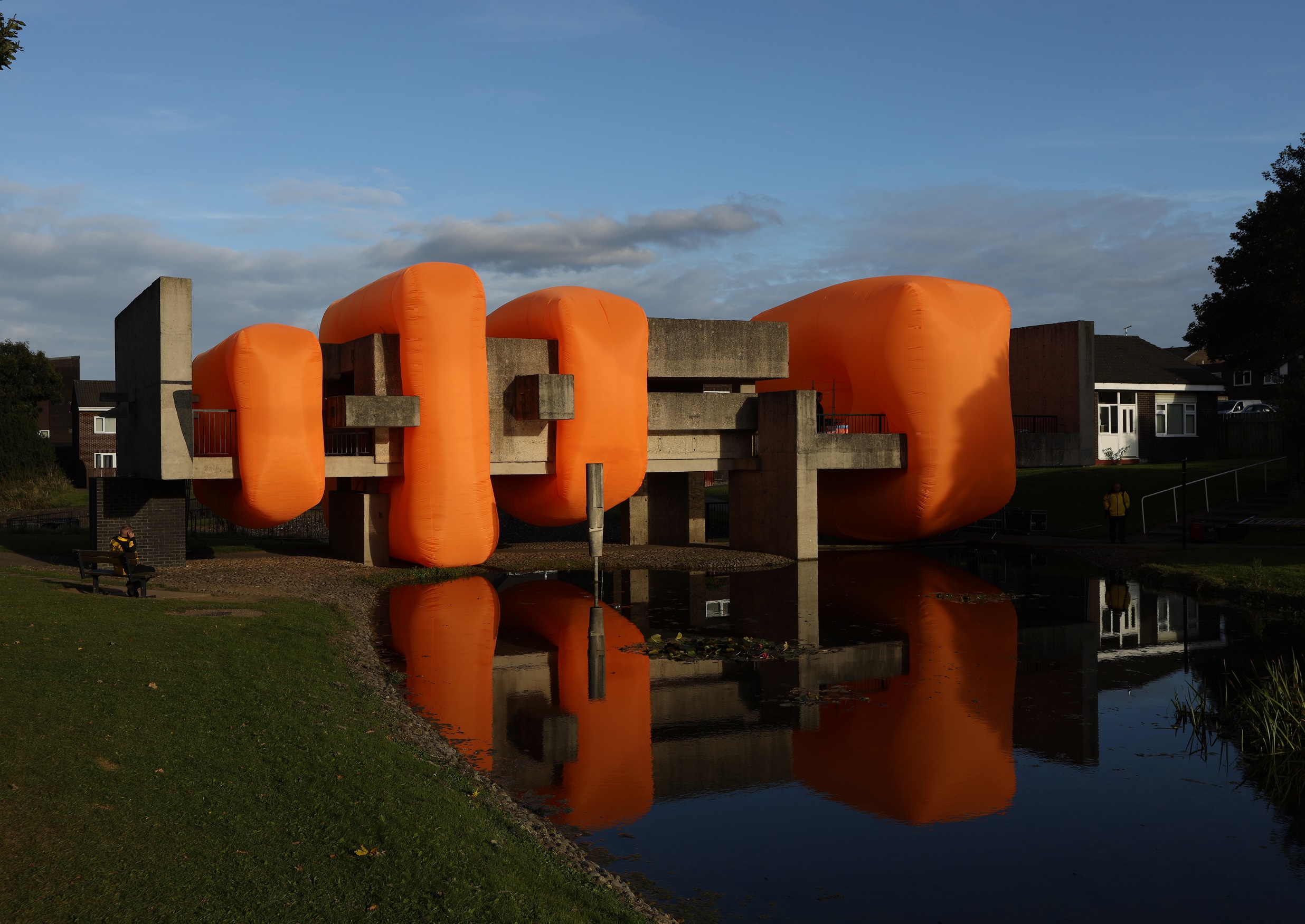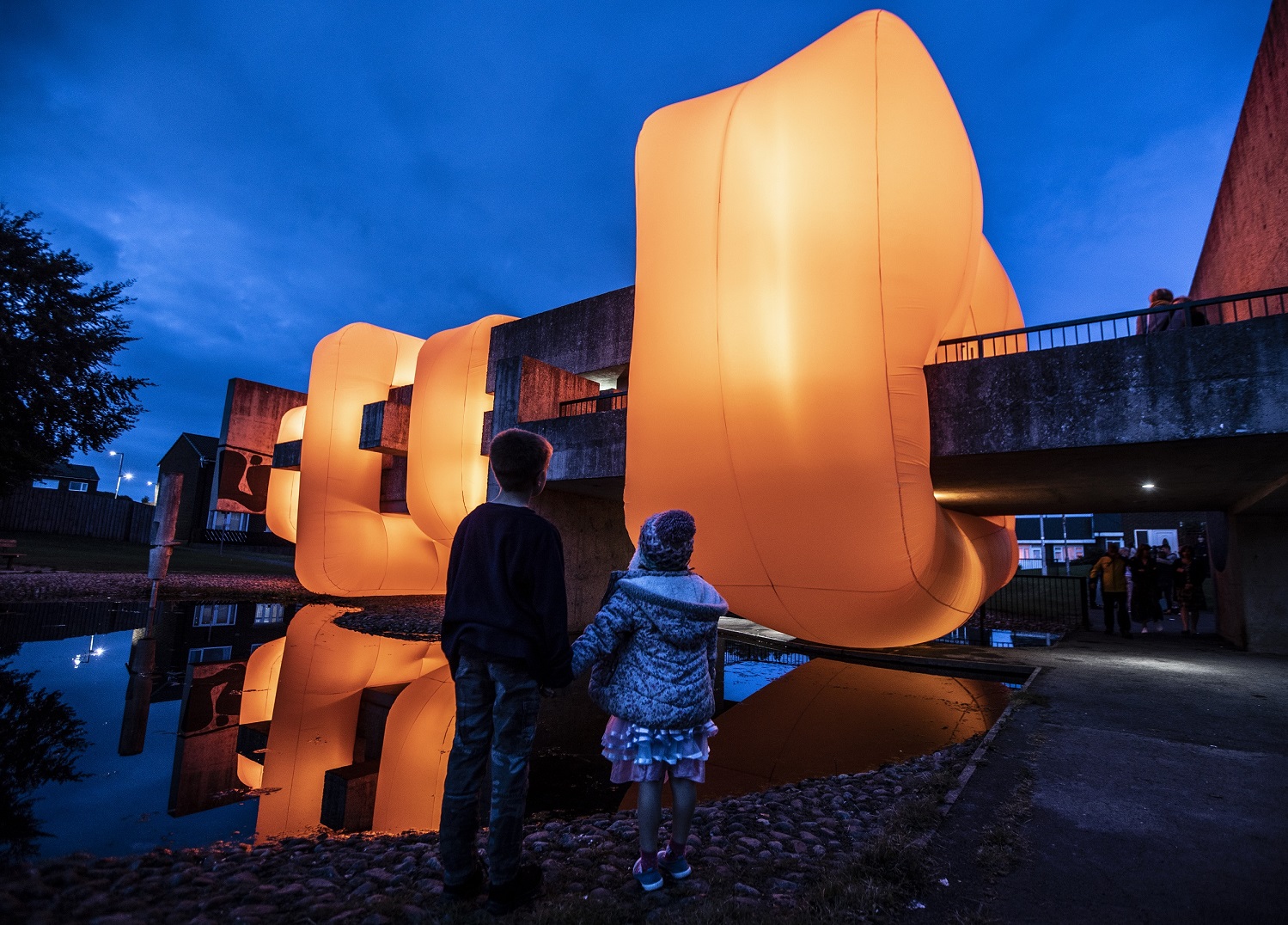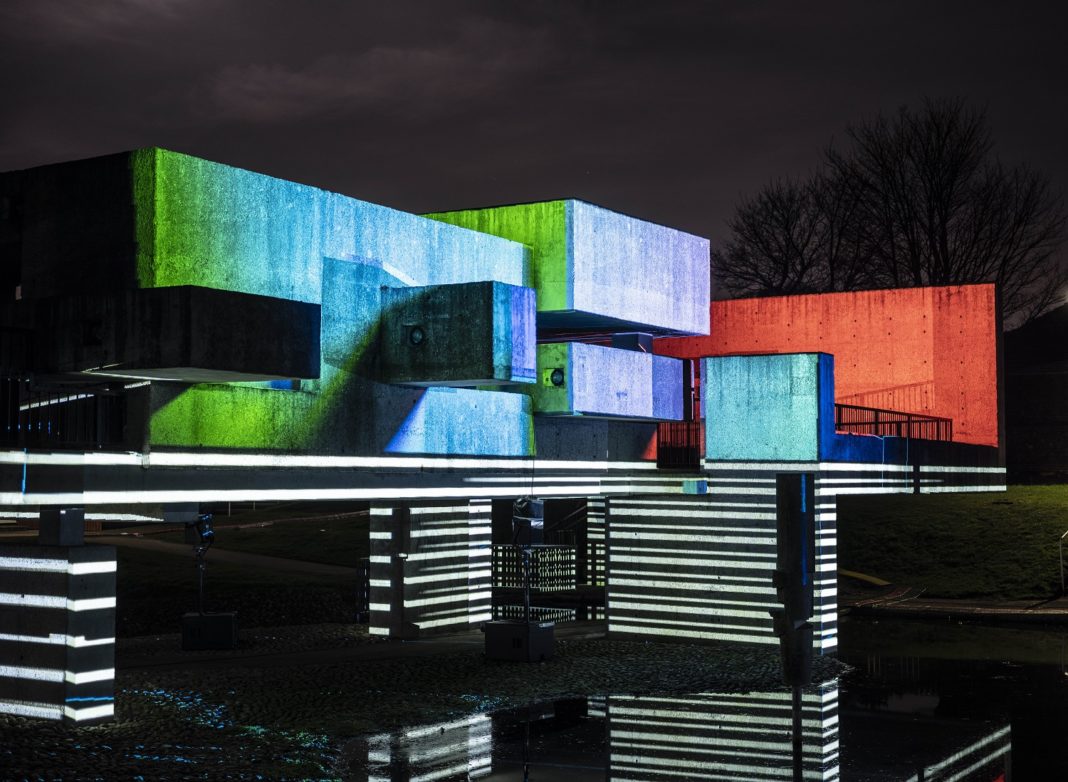A bold example of public art, which features within County Durham’s bid to be UK City of Culture 2025, has been cited as a major inspiration by a Turner prize winning artist.
To mark its 90th anniversary in 2021, the Building Centre invited 90 leading figures to choose their favourite examples of the built environment for its 90for90 project.
Since then, the organisation, which represents and brings together different disciplines within the industry, has been sharing the chosen buildings on its website each month.
The Apollo Pavilion in Peterlee is among the latest to be revealed after it was nominated by Sir Antony Gormley, the award-winning sculptor best known for the iconicF Angel of the North.

Describing it as a utopian inspiration, Sir Antony praised the ambition and integrity of Victor Pasmore’s Brutalist creation, adding: “It was very much the influence of Pasmore’s utopian vision of a work grounded in community that led me to make the Angel of the North.”
The Apollo Pavilion is located in the heart of Peterlee’s Sunny Blunts estate and has inspired many other creative endeavours since its completion in 1969.
Most recently, it has captured the imagination of the team behind Durham’s countywide bid to be UK City of Culture 2025, with plans now being developed for a contemporary art and architecture programme linked to the pavilion and inspired by Pasmore’s archive.
County Durham landscape artist Steve Messam is thrilled the pavilion is included within the 90for90 project.


In 2019, Steve was commissions by Durham County Council to create an installation at the pavilion to mark its 50th anniversary. Artichoke, producers of Lumiere, the UK’s leading light festival also received a commission as part of a year of activities to celebrate the milestone, as well as the anniversary of the moon landing, which inspired the pavilion’s name.
While working on the commission Steve developed a great appreciation for the spaces within the concrete forms, which he highlighted with illuminated orange shapes.
“Above all else I loved the boldness and ambition of a public artwork of that scale in the heart of a modest housing development,” said Steve.
“This was not art for the rich or privileged, but a bold vision of art at the centre of ordinary people’s lives. A building with no purpose but to just be there. It’s everything that my own work looks to do.
“It was amazing that Durham County Council commissioned me to make a work of that scale at the pavilion. I don’t know of any other local authority commissioning temporary works of that scale in places like that anywhere else in the UK.
“As the county bids for UK City of Culture status in 2025, I hope to see more bold, ambitious and original projects in every community.”
The 50th anniversary celebrations also featured Apollo 50, a commission from Lumiere producers Artichoke, which saw a unique video-mapped light sequence by Berlin-based duo Mader Wiermann projected onto the pavilion, accompanied by a soundscape. The stunning projection returned to Peterlee in 2021 as part of Lumiere’s new county programme, helping to win the festival’s latest accolade as the best creative lighting event category in this year’s Darc awards.


Artichoke also delivered a community-based education programme linked to the project. Fifteen young people from the area took part in a series of masterclasses linked to Guildhall School of Music and Drama’s BA in video design for live performance. The young people also showcased their original artwork at Lumiere in 2019.
Pupils from Shotton Hall Academy and Dene Academy, meanwhile, have worked on a variety of projects inspired by the pavilion. This includes producing a commemorative community newspaper and creating their own artistic response to Steve Messam’s installation.
Natalie Coyne, head of art at Dene Academy, said the projects had helped pupils to develop a greater understanding of the pavilion, which has divided opinion among residents over the years.
“I’ve always had a soft spot for the Apollo Pavilion,” she said. “One of my aims in using the pavilion in our curriculum, and having students involved with previous community projects, is to help them to see beauty within its Brutalist facade. Slowly but steadily. I think it’s working.”
Durham County Council with the support of principal partner Durham University submitted County Durham’s bid to be UK City of Culture on behalf of Culture Durham, a partnership of more than 20 cultural organisations from across the county.
Securing the prestigious title would bring thousands of jobs, boost the county’s creative and visitor economies by millions of pounds and empower residents. It would also support the delivery of an inclusive, pioneering and relevant cultural programme with a legacy that extends far beyond 2025.
Last month, Durham was one of just four locations from the 20 that originally entered to make the shortlist. The winner is expected to be announced next month.
To find out more about County Durham’s bid, visit www.durham2025.co.uk and follow the Durham 2025 social media accounts at www.facebook.com/Durham2025, www.twitter.com/durham_2025 or www.instagram.com/Durham2025_


























